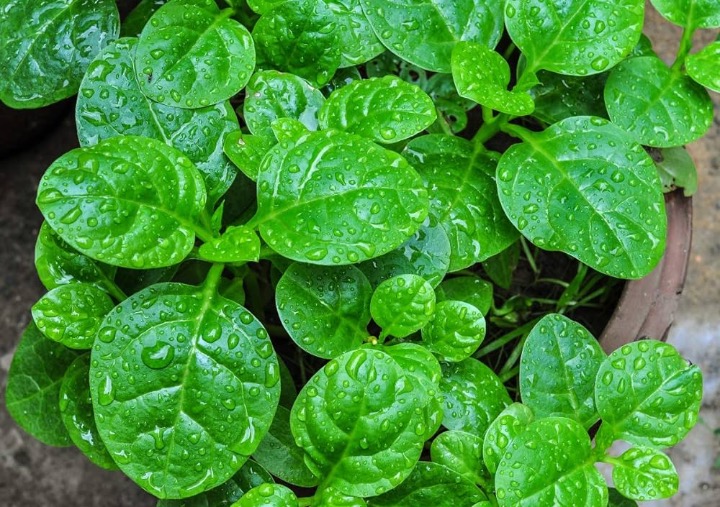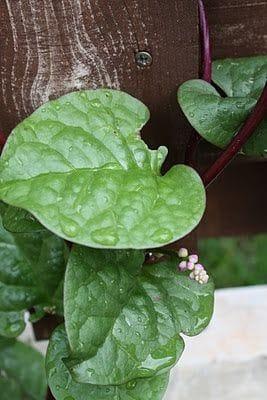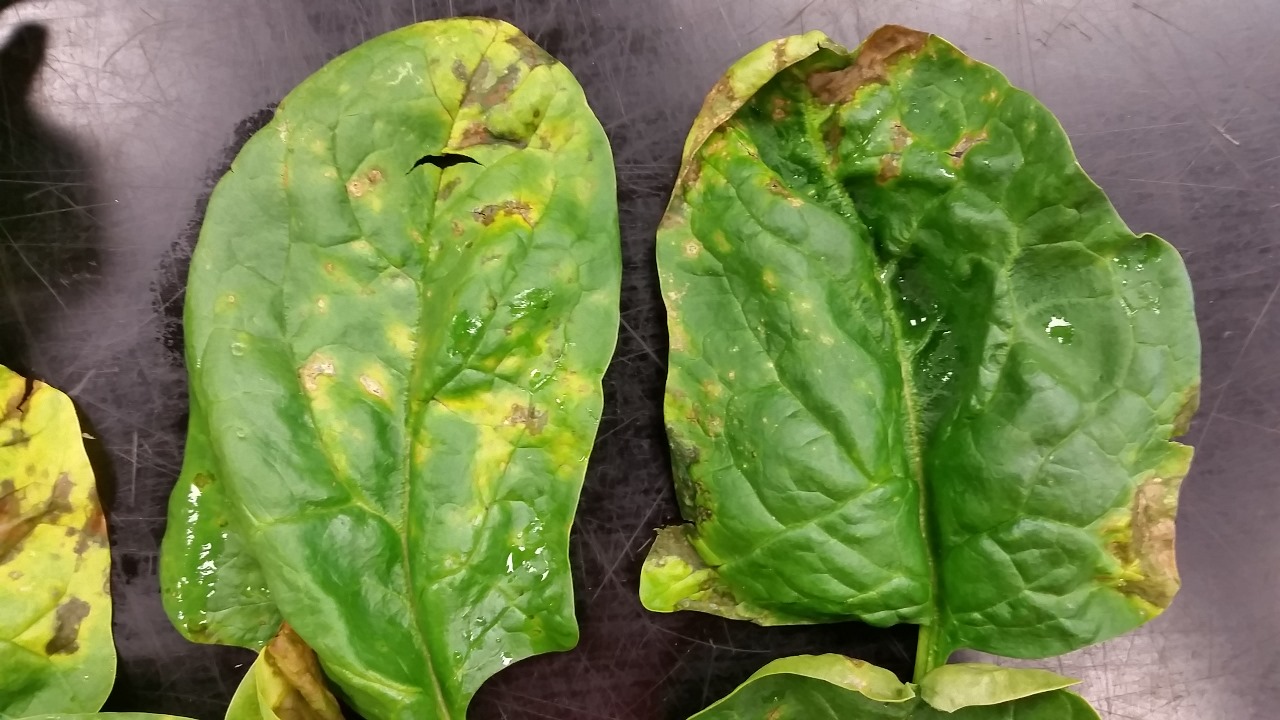Malabar Spinach Plant
Malabar spinach, a perennial, prefers well-drained, fertile soil and partial shade to full sun. It's fast-growing and thrives in moist conditions.
Habit
Perennial
Height
0.3 to 1.0 m
Growth
Fast
Soil
Well-drained, Loamy
Shade
Partial shade to full Sun
Moisture
moist
Edible
Yes
Medicinal
Yes
Origin
India
Climatic Condition
Tropical, Subtropical
Temperature (°)
20°C to 30°C
Humidity (%)
60% to 80%
Potting media
50% Loam, 30% Sand, 20% Compost
Fertilizers
Organic Fertilizer
Watering
Regular watering
Plant Weight
1 to 2 kg
Flowering Time
Summer to Fall
Soil Ph level
6.0 to 7.5
Water Ph level
6.0 to 7.0
Soil EC
0.5 to 0.8 mS/cm
Yield Per Plant
3 to 5 kg per plant
NPK ratio
4:03:02
life Span
2 to 3 years
Health Benefits
High in Nutrients, Antioxidant
Suggested Grow Media or Potting Mix ?
50% loamy soil, 30% compost, 20% sand
Suggested Fertigation/Fertilizers
Fertilize every 2 weeks with a balanced fertilizer.
Common Diseases and Remedies
Leaf spot , Anthracnose
Small circular grey spots with a dark purple brown rings , Water soaked lesions
Avoid overhead watering , Bury infected crop , Purning infected trees
HEALTH BENEFITS
Rich in vitamins A and C, supports digestion and eye health.
What Is An Malabar Spinach ?
Malabar spinach, Indian spinach, or vine spinach, is a green leafy vegetable that is popular in many Asian countries, including India, Indonesia, and the Philippines. Although it is thought to originate from tropical Asia and Africa, it is now cultivated in many parts of the world. Malabar spinach has several characteristics that make it different from other types of spinach. The leaves are thick and fleshy and vary in colour from dark green to deep red. The leaves are slightly crunchy and have a mild, earthy flavour similar to regular spinach.

What Are The Different Types Of Malabar Spinach Plants?
1. Red stem Malabar spinach
This variety is characterized by its deep red stems and green leaves. The stems can be used to add colour to stir-fries and salads.
2. Colourful Malabar Spinach
This variety has green leaves with white or yellow variegation. It is mainly grown as an ornamental, but it can also be eaten.
3. Climbing Malabar Spinach
This variety has an active habit and can climb trellises and other structures. Perfect for small gardens and balconies.
4. Compact Malabar Spinach
This variety grows more compactly and produces smaller leaves than other varieties. Ideal for growing in containers or small gardens.
5. Round-leaf Malabar spinach
This variety has round leaves instead of the typical arrow-shaped leaves. It is mainly used as an ornamental, but the leaves are also edible.

How to Care Malabar Spinach Plants ?
1. Location
Choose a location with partial sun or light shade. Malabar spinach can grow up to 10 feet tall, so give it plenty of room to climb. Malabar spinach is a tropical plant that grows best in warm, humid climates. As the plant grows, train the vine to climb onto a trellis or other support structure. This will help keep the plant out of the ground and prevent disease.
2. Sunshine
Malabar spinach prefers a warm, humid climate with part sun to light shade. It will grow in full sun, but you may need to water more frequently. Ideally, they should receive at least six hours of direct sunlight each day to achieve a healthy yield. In hot regions, it is best to grow plants in partial or filtered sunlight to avoid overheating and leaf scorch.
3. Soil
Malabar spinach prefers well-drained soil that is rich in organic matter. Grows best in soil with a pH of 6.0 to 6.5. If your garden soil is heavy clay or sand, amend the soil with compost, peat moss, or well-rotted manure before planting to improve its structure and fertility. When planting Malabar spinach in a container, use a loose, well-draining potting mix. Adding perlite or vermiculite to the mix will improve drainage.
4. Hydration
Malabar spinach requires regular watering to keep the soil moist but not soggy. Water deeply once or twice a week, depending on climate conditions, to ensure the soil has sufficient moisture. Watering the leaves can cause disease problems. Instead, water the plant at the base, preferably using a drip irrigation system. Adding a layer of mulch around the base of your plants can help retain moisture and keep the soil cool in hot weather.

5. Nourishment
Malabar spinach responds well to regular fertilization. Use a balanced fertilizer, such as a 10-10-10 N-P-K ratio. Fertilize every 4 to 6 weeks during the growing season. Compost is an excellent source of organic matter that helps improve soil fertility. Adding compost to the soil before planting or as a top dressing during the growing season will help nourish your Malabar spinach plants.
6. Issues
Malabar spinach can attract aphids, spider mites and whiteflies. These pests can cause stunted growth and defoliation. To get rid of pests, try using insecticidal soap or horticultural oil. You can also try spraying your plants with a mixture of water and dish soap. If your Malabar spinach leaves turn yellow, this may indicate a nutritional deficiency. Adding organic matter or nitrogen-rich fertilizers can help solve this problem.
What are the Benefits of Malabar Spinach ?
Malabar spinach is an excellent source of several essential nutrients, including vitamins A and C, iron, calcium, and magnesium. The antioxidant properties of Malabar spinach help strengthen the immune system and protect against disease. Malabar spinach contains fiber and antioxidants that help lower cholesterol and reduce the risk of heart disease. Malabar spinach's anti-inflammatory properties can help reduce inflammation in the body and reduce conditions such as arthritis. Preliminary research suggests that Malabar spinach may have anti-cancer properties because it is rich in antioxidants. Malabar spinach is rich in fiber, which can promote healthy digestion and prevent constipation.

FAQs About Growing Malabar Spinach
1. Is Malabar spinach easy to grow ?
Yes, Malabar spinach is relatively easy to grow, especially in warm tropical climates. It grows in sun to semi-shade and prefers fertile, well-drained soil.
2. How tall does Malabar spinach grow ?
Malabar spinach is a climbing plant that can reach 1.8 to 3 meters in height under optimal growing conditions. Produces long trailing stems that can be trained to climb trellises, fences, or other supporting structures.
3. How do I propagate Malabar spinach ?
Malabar spinach can be propagated from seeds or stem cuttings. Seeds should be sown directly in the garden or planted indoors and transplanted after the last frost. Stem cuttings can be taken from mature plants and rooted in water or a well-drained potting mix.
4. Is Malabar spinach nutritious ?
Yes, Malabar spinach is rich in vitamins A, C and E as well as minerals such as iron, calcium and magnesium. It is also a good source of dietary fiber and antioxidants.
5. Can Malabar spinach be grown in containers ?
Yes, Malabar spinach can be grown in containers or pots as long as it has enough support to climb. Choose a large container with well-drained soil and place it in a sunny location.
